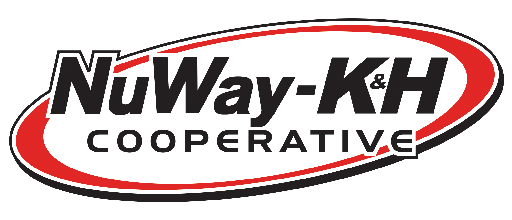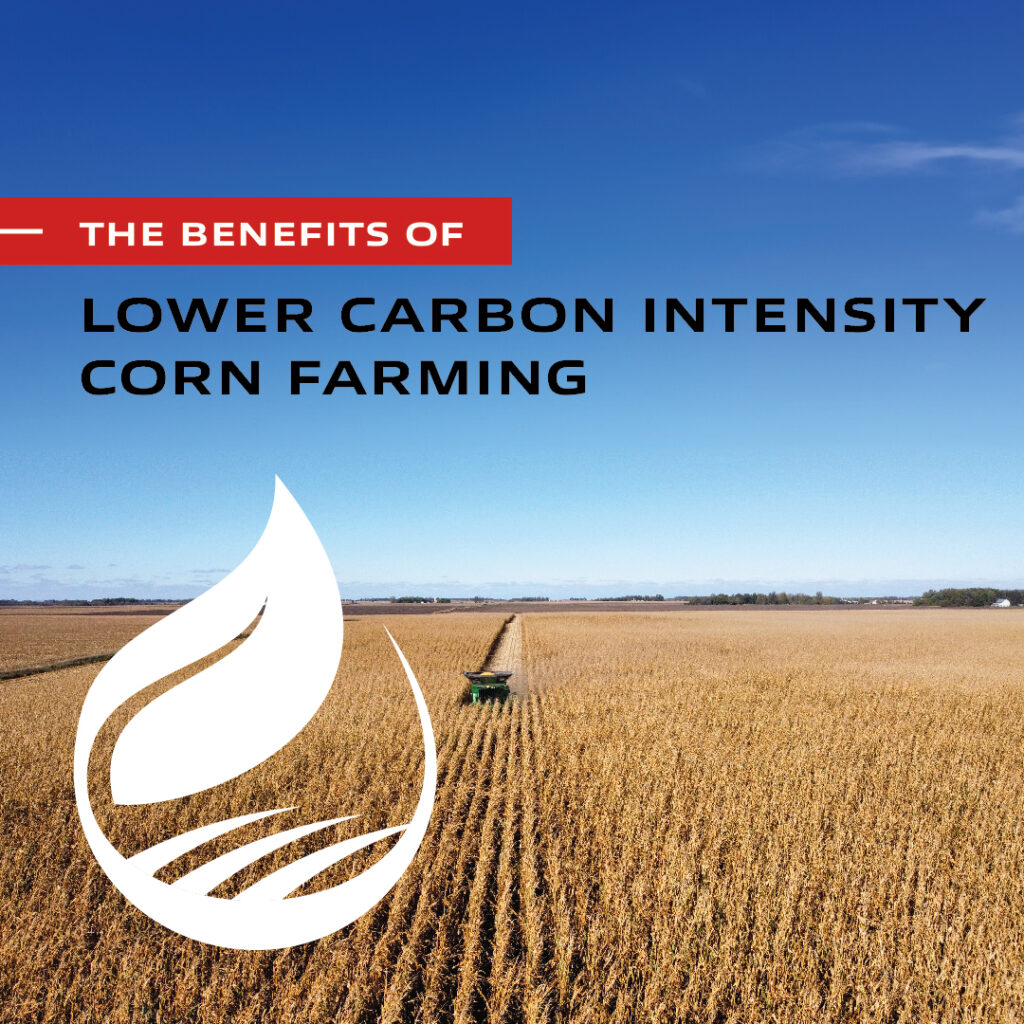Why Carbon Intensity Scores Matter More Than Ever
In recent years, measuring carbon intensity – the greenhouse gas emissions generated throughout a product’s life cycle – has become a big deal in agriculture, especially for corn grown for ethanol. Major ethanol producers like Valero, POET, and Green Plains are prioritizing corn with a low carbon footprint to shrink the environmental impact of their operations.
The lower a corn crop’s carbon intensity (CI) score, the more sustainable it’s considered. Standard corn production typically rates around 29.1 on the CI scale. But by going green with eco-friendly practices, growers can significantly slash that number, making their corn operations more appealing to ethanol companies who are working towards a sustainable future.
The agricultural sector is facing mounting pressure to reduce its sizable carbon footprint and contribution to U.S. greenhouse gas emissions. Governments, consumers, and industries are demanding more sustainable products and processes. This creates challenges, but also major opportunities for corn growers.
Slashing carbon emissions is becoming a great financial opportunity, too. As climate concerns intensify and low-carbon initiatives ramp up, growers proactively implementing sustainable practices to drive down their CI scores will be first in line to profit from financial incentives and market opportunities in this growing low-carbon economy.
Farm Practices That Help Lower Carbon Intensity
Implementing certain eco-friendly farming methods can drastically cut a corn operation’s carbon intensity score. And these practices don’t just benefit the environment – they also position growers to cash in on emerging low-carbon financial rewards. Below are several strategies that corn farmers can implement to help reduce their CI score
Optimizing Nutrient Efficiency
Using just the right amount of fertilizer at the optimal times minimizes excess greenhouse emissions from overproduction and overapplication. Precision ag tech like variable-rate fertilizing based on yield data can help make nutrient management smarter and leaner.
Reducing Tillage
Low and no-till methods help cut down on diesel fuel use and soil disturbance – two big contributors to high carbon intensity. They also help trap carbon in the soil, providing an extra environmental boost.
Planting Cover Crops
Covering bare soil with cover crops between cash crop cycles absorbs carbon from the atmosphere while improving soil health and potentially cutting some synthetic input needs – a trifecta for low CI scores. Cover crops also help to deter weeds.
Using Fewer Pesticides
Dialing back on pesticide applications reduces emissions from manufacturing and spraying them while promoting biodiversity. Integrated pest management (IPM) methods like crop rotation and selective spraying can help reduce dependency on pesticides.
Cutting Diesel Consumption
Adopting precision ag technology, streamlining field operations, and upgrading to more efficient machinery can help cut down on the use of diesel fuel. Practices like controlled traffic farming reduce compaction, too.
Many of these techniques have extra positive ripple effects beyond just lowering CI scores. No-till preserves moisture and prevents erosion, while cover crops improve soil fertility and provide forage. Precision ag is a game-changer for optimizing inputs and minimizing waste, and tools like variable-rate nutrient application, yield mapping, and soil sampling help farmers make smarter decisions and apply only what’s needed, saving money and emissions.
The Aviation Industry’s Soaring Demand for Sustainable Fuel
Sustainable aviation fuel (SAF) is taking off as a key solution to address air travel’s large carbon footprint. SAF is a bio-based jet fuel with properties similar to conventional fuel, but a much smaller environmental impact.
The Departments of Energy, Transportation, and Agriculture have set the goal of replacing ALL aviation fuel – 35 billion gallons annually – with SAF by 2050 to achieve at least a 50% emissions reduction.
Corn-derived ethanol is a frontrunner biofuel for manufacturing SAF, putting corn growers in the position of being a top supplier for this growing market. As demand for low-carbon SAF soars, so will should demand for sustainably-produced, low CI corn.
Supplying the SAF boom offers corn farmers a lucrative opportunity to branch out into low-carbon markets. Growers able to demonstrate a commitment to sustainability and deliver low CI corn will have a major competitive edge.
Aviation’s aim for sustainability is likely just the beginning, with other transportation sectors expected to follow suit in pursuing low-carbon fuel sources. By getting ahead of the curve on lowering CI scores, corn producers can pioneer and pave the way in the future of low-carbon fuels.
Financial Rewards for Low-Carbon Corn Farmers
The 2022 Inflation Reduction Act that comes with incentives for ethanol producers to go low-carbon. Section 45Z establishes a juicy tax credit motivating plants to produce low-emission fuel from ultra-sustainable corn with rock-bottom CI scores.
Valid for 2025-2027, but expected to be extended, this tax incentive could net ethanol companies around 5.4 cents per CI point below the 29.1 baseline. That means potentially large payouts they may share with growers supplying low-CI grain.
For example, a 220 bushel/acre corn crop at a perfect 0.0 CI score could net a staggering $1.57 per bushel ($345/acre) added value for ethanol producers from the tax credit alone. Of course, they’ll pass along a slice of those savings to growers producing that corn.
While exact figures are still in flux, industry estimates suggest growers could pocket a 20% premium – in our example, a $70/acre bonus – for supplying corn with a radically low CI footprint.
And that’s just the beginning. Lower input costs from using fertilizers, pesticides, and diesel more efficiently can trim production expenses. Healthier soils and improved moisture retention from practices like no-till and cover crops often yield higher and more resilient crops for better profits, too.
As demand for eco-conscious products explodes, it’s a safe bet more low-carbon financial incentives and market opportunities will continue sprouting up.
Future-Proofing Your Farm for the Low-Carbon Transition
With consumer pressure and climate concerns driving the accelerating shift to a low-carbon economy, positioning your operation for this inevitable transition just makes good business sense.
While the full rewards may not come until later this decade, getting started with sustainable CI-slashing practices now gives your farm a headstart. Even small steps right away will start lowering your carbon footprint and readying your farm to capitalize once the big financial incentives kick in.
Don’t go it alone – tap into resources like the knowledgeable team at NuWay-K&H Agronomy. They can advise you on specific strategies and technologies to shrink your carbon footprint most effectively for your operation’s unique needs.
The window is wide open for corn growers to get ahead of the low-carbon boom. By taking proactive steps to lower your CI score today, you can be at the helm of all the good it’s going to bring.
Carbon Intensity Q&A For Farmers
Q: How could a widespread shift to low-CI corn impact rural communities and businesses?
A: The transition to low-carbon corn production could have a ripple effect across the entire agricultural supply chain and rural economies. Companies providing things like seeds, fertilizers, and farm equipment may need to evolve their product offerings. But it could also open up new business opportunities in sustainable ag for rural areas. Some communities might need to adapt, but others will have an easier time.
Q: What new farming technologies could help corn growers reduce their carbon footprints?
A: We mention precision ag tools like variable-rate fertilizer applicators and yield mapping software in the article above. These types of technology allow farmers to precisely target inputs, reducing waste and emissions. But there are other emerging solutions out there too – things like soil sampling drones, remote sensing, and field mapping tools. By enabling smarter, more targeted management, precision ag innovations like these can give a boost in lowering carbon intensity scores.
Q: Besides making ethanol and aviation fuel, what other uses could there be for low-carbon corn?
A: This environmentally-friendly corn could find its way into other bio-based fuels or biochemical products where companies want to reduce emissions. As the push for planet-friendly options grows, there may even be opportunities to market low-carbon corn directly to consumers looking for more sustainable food choices.
Q: Are there any downsides to growers adopting these carbon-cutting practices?
A: Some of the techniques we mentioned, like no-till farming or planting cover crops, could require new equipment investments or extra management upfront. And cutting back on pesticides, while beneficial for the environment, runs the risk of increased weeds or pests if not coupled with smart integrated pest management. Growers may need to weigh the short-term costs against long-term economic and environmental payoffs.
Q: Besides financial incentives, what other motivating factors could drive corn farmers to go low-carbon?
A: For some growers, implementing eco-friendly practices is simply the right thing to do based on their personal environmental values or commitment to sustainability in their local communities. Others may be motivated by the long-term benefits of protecting soil health and making their farms more resilient for the future – which the practices like no-till and cover crops can provide.
Bottom Line
The future of low-carbon corn starts now. Don’t hesitate to reach out to our trusted advisors here at NuWay-K&H Cooperative with any questions about any of the above or exploring ways to start your own journey towards lower-CI corn-growing. Click here to get started

